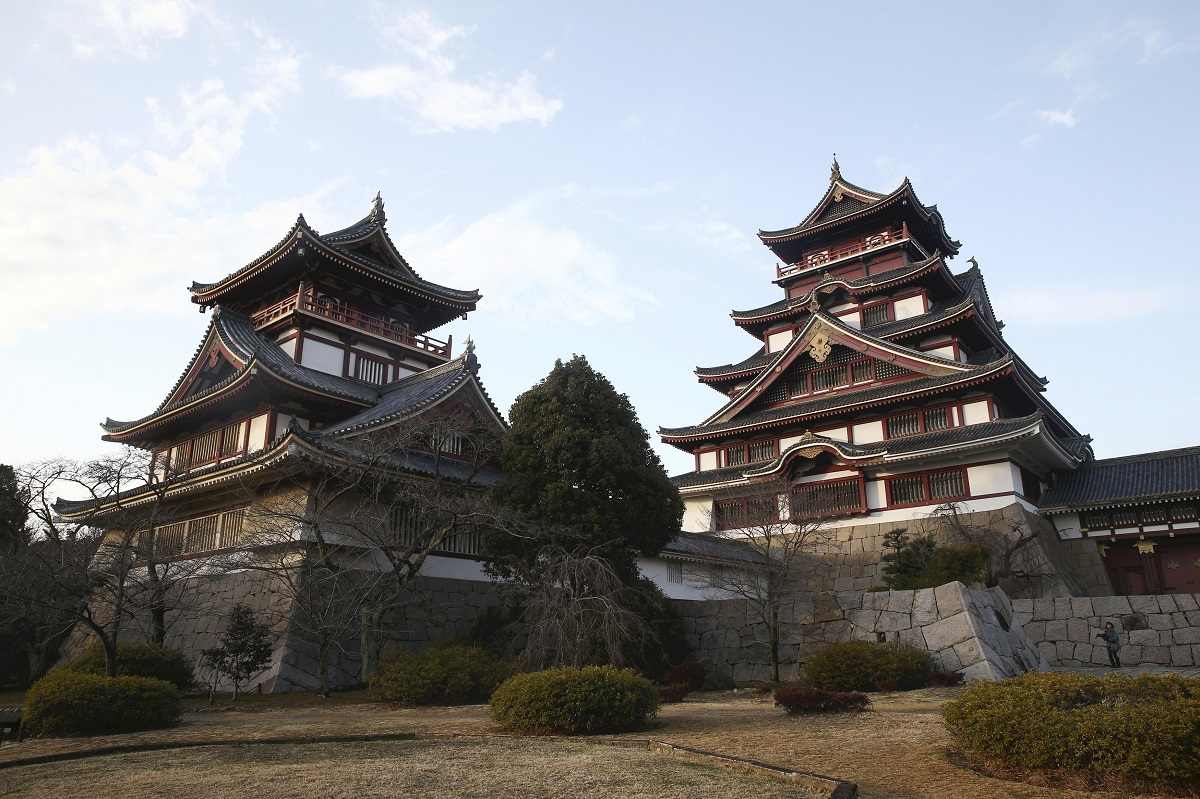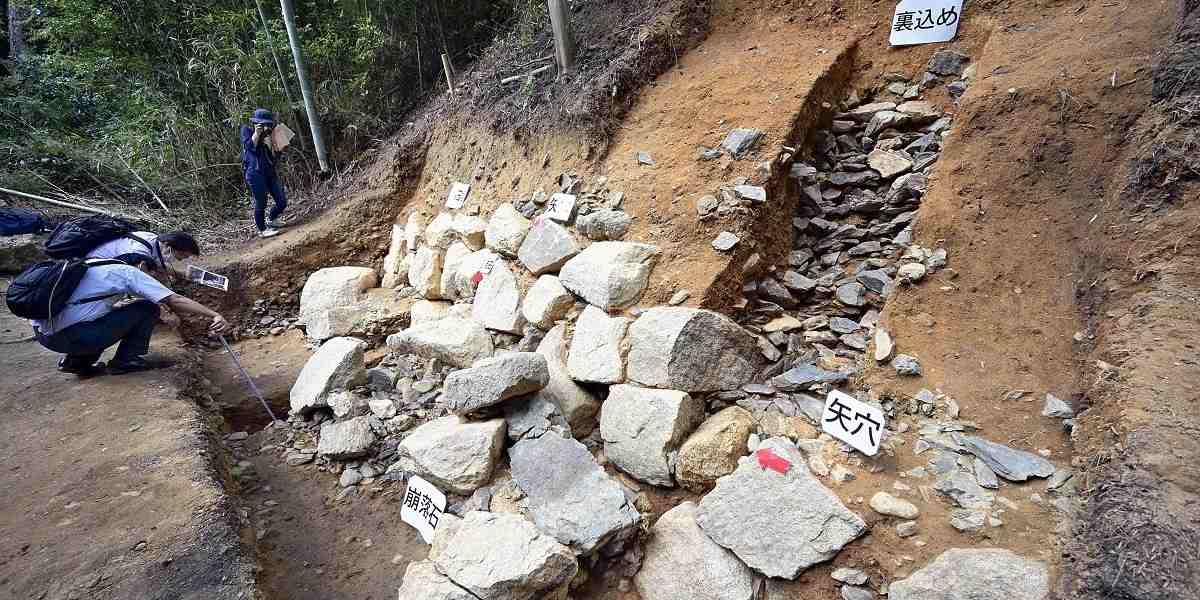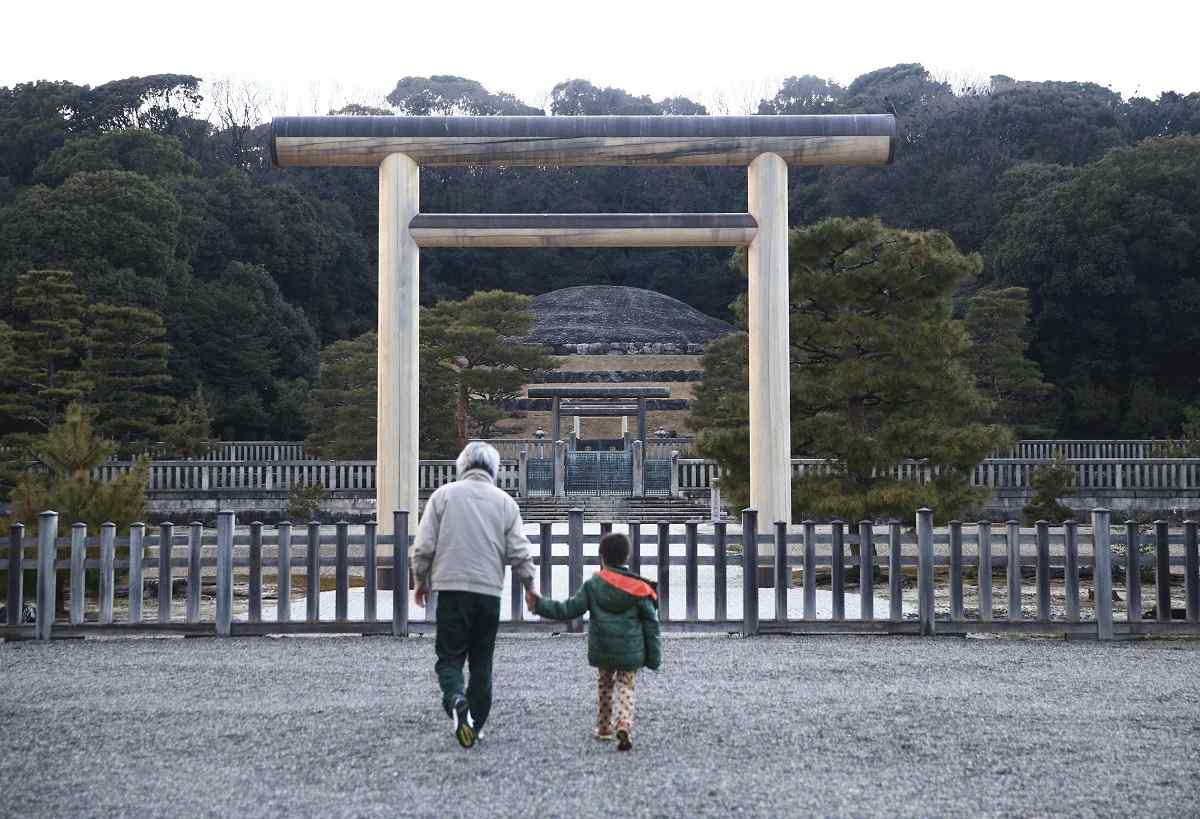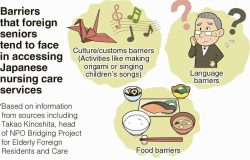Secrets of Kyoto / Revisiting the Memories of Fushimi Castle in Kyoto; The Most Important Castle of the Toyotomi Family

A mock donjon was built near the ruins of the Fushimi Castle keep in 1964 as an amusement park attraction.
10:00 JST, March 28, 2024
Fushimi Castle in what is now Fushimi Ward, Kyoto, was a governing base for Toyotomi Hideyoshi (1537-98) and then Tokugawa Ieyasu (1543-1616) — both great rulers of Japan in the late 16th and the early 17th centuries, respectively.
The castle was built by Hideyoshi in 1592 as his retirement palace. He made his nephew, Toyotomi Hidetsugu, his heir and let him take over the title of kanpaku, the top post of the regime. Hidetsugu also inherited from his uncle a castle called Jurakudai in what is now Kamigyo Ward, Kyoto, which served as the administration base during Hideyoshi’s reign. (Jurakudai no longer exists for a reason to be explained later).
Three years later, however, Hidetsugu was suspected of plotting treason. He left Jurakudai and went to Fushimi Castle, only to be denied a meeting with his uncle. Hidetsugu then traveled to a temple in the Koyasan highland in the Kii mountains of Wakayama Prefecture, where he killed himself without waiting for Hideyoshi’s instructions.
It may seem odd that Hideyoshi, who had already retired, had more power than Hidetsugu, but this is something that often happens in the history of Japanese politics.
Hidetsugu’s suicide was a rebuke to Hideyoshi and significantly weakened the Toyotomi regime. Enraged, Hideyoshi destroyed Jurakudai. From then on, Fushimi Castle became the most prestigious official residence of the Toyotomi regime. Today, Osaka Castle is often regarded by Japanese people as the most important castle of the Toyotomi family, but it was treated as a private residence back then.
After Hideyoshi died of an illness at Fushimi Castle, Tokugawa Ieyasu became the most powerful man in Japan. He also became the lord of the Fushimi Castle, where he dealt with political matters. Hideyoshi’s son, Hideyori, was expected to become the kanpaku lord in the future, but the child was too young for the job and moved to Osaka Castle.
“It was [Tokugawa] Ieyasu who made the most of Fushimi Castle’s functions and images as an official residence of a monarch,” said castle archaeologist Yoshihiro Senda.
Ieyasu received the Emperor’s envoy at the castle to become shogun, the leader of the samurai warrior families. Kanpaku, the title that used to be Hideyoshi’s title, was the leader of the aristocrats. It was extremely unusual for Hideyoshi, a samurai and not an aristocrat, to become kanpaku.
Technically, kanpaku is ranked higher than shogun. But it was often the case that a shogun had more power than a kanpaku, which makes one curious to know why. Tokugawa Ietada, a son and heir of Ieyasu, and subsequently Tokugawa Iemitsu, a grandson of Ieyasu, received the title of shogun at Fushimi Castle.
Going back in time a little, the years ruled by Oda Nobunaga (1534-82) — who led Japan before Hideyoshi — and Hideyoshi, are combined and called the Azuchi-Momoyanma period (1568-1600). Azuchi is the name of the place where Nobunaga’s Azuchi Castle was located. Today it is the town of Azuchi in Oumi-Hachiman, Shiga Prefecture.
Momoyama is also the name of the place where Fushimi Castle was located. But the word is derived from the fact that peach trees were planted on the hill after the Fushimi Castle was demolished immediately after Tokugawa Iemitsu became the third shogun of the Tokugawa shogunate, and the place became known as “Momoyama,” or peach hill.

After the demolition of the Fushimi Castle, stone walls unearthed during archaeological excavations are the only remains of the castle.
In short, Tokugawa authorities wanted to get rid of as many things that reminded people of Hideyoshi as possible.
After Fushimi Castle was abandoned, Nijo Castle in what is now Nakagyo Ward, Kyoto, became the official Kyoto residence of the Tokugawa family, who were largely based in Edo, the old name for Tokyo.
What did become of Momoyama? After the Edo period (1603-1867), the mausoleum of Emperor Meiji, who ruled Japan after the Tokugawa era, was built on the hill. The Momoyama Goryo mausoleum is located at what used to be the southernmost section of the Fushimi Castle keep.
Emperor Meiji was born in Kyoto and moved to Tokyo, which had been newly renamed from Edo, after the Meiji Restoration. He longed for Kyoto and detested the Tokugawa family but was fond of Hideyoshi so he chose to be buried in Momoyama, where there were memories of Hideyoshi.

People walk toward the Momoyama Goryo mausoleum in Kyoto, the tomb of Emperor Meiji built on the site of the former keep of Fushimi Castle.
"JN Specialities" POPULAR ARTICLE
-

The Japan News / Weekly Edition (12/12-12/18)
-

English-language Kabuki, Kyogen Entertain Audiences in Tokyo; Portland State University Professor Emeritus, Graduates Perform
-

Noodle Dining Shunsai / Rich Oyster Ramen to Savor at Odasaga; Experienced 68-year-old Owner Creates Numerous Ramen Varieties
-

The Japan News / Weekly Edition (12/5-12/11)
-

People Keep Loved Ones’ Ashes Close in Special Jewelry, Small Urns as Unique Way to Memorialize Them
JN ACCESS RANKING
-

Keidanren Chairman Yoshinobu Tsutsui Visits Kashiwazaki-Kariwa Nuclear Power Plant; Inspects New Emergency Safety System
-

Imports of Rare Earths from China Facing Delays, May Be Caused by Deterioration of Japan-China Relations
-

University of Tokyo Professor Discusses Japanese Economic Security in Interview Ahead of Forum
-

Japan Pulls out of Vietnam Nuclear Project, Complicating Hanoi’s Power Plans
-

Govt Aims to Expand NISA Program Lineup, Abolish Age Restriction

























